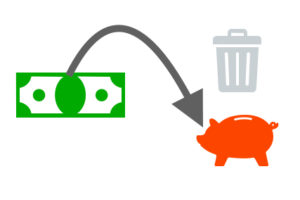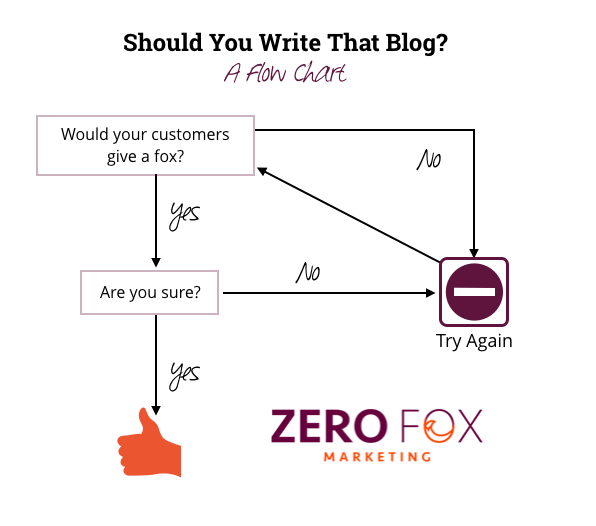When I get on a phone with a business owner for the first time, we talk about a few key things, usually in this order:
- The story of their business and background (so I can understand where they’re coming from),
- Their goals (so I can understand the results they want to achieve), and
- What they’ve done in terms of marketing till this point.
Point 3 is where my heart sinks almost every single time.
Many are spending significant amounts of their hard-earned money on marketing. And they’re spending it with little idea about whether it’s working or not.
When they describe the efforts, I can often hear the uneasiness in their voices. I ask for access to Google Analytics. Many times they don’t have it, it’s not configured correctly, or they don’t have a true understanding of how it relates to ROI on their marketing dollars. Past reports are either non-existent, or have a lot of numbers but no real practical insights. They often feel like they lack control.
There are usually one or more of the following things going on:
- They’ve got a big budget line item that has been left untouched because they’ve always had it (Examples: directory listings and print ads, Yellow Pages, direct mail and coupons, sponsorships)
- They’re spending money on a service that they don’t understand at its core (Examples: SEO, AdWords, Facebook Marketing, mobile apps)
- They’re doing the same things over and over because it has been on their team’s regular to-do list (Examples: marketing emails, regular social posts)
- They’ve got an emotional or traditional tie to something and haven’t thought about it critically in a long while (Examples: a yearly campaign, a family friend’s recommendation on retainer, a long standing business relationship)
It doesn’t mean that these things cannot or do not work.
Sometimes ROI is already there. In other cases, small tweaks and a bit of strategic thinking to improve tactical execution could improve results.
The problem is that they just don’t know. It’s an answer that they wouldn’t settle for in other parts of their business, but they seem to settle for it in marketing.

But it doesn’t have to be that way!
Regaining control of marketing efforts to prevent waste and put more money in the bank is possible. It is a process, but it can have big payoffs.
Here are some ideas to get started in your business.
1. Invest time in measurement.
- Get access to your Google Analytics and make sure that its tracking conversions.
- Look into services that can help you measure on- and offline marketing results (i.e. call tracking that counts the calls you get from different ad sources).
- Create a dashboard that shows revenue changes in all aspects of your business clearly, and tie it to marketing efforts.
With this data, you’ll get a better understanding of what marketing efforts are working, and make better educated decisions that lead to more profitable growth.
For example, I worked with a client whose AdWords account appeared successful on the surface. After some time investment in better tracking and analysis, we found that the cost of the campaign was amounting to around 10% of every dollar made, effectively wiping out profits on products where margins were tight. We got that number down to 2-3% overall with some targeting strategies. The end result was more profitable ad spend.
2. Be as objective as possible.
Yes, some marketing benefits are intangible. “Soft” benefits include brand recognition, employee retention, etc. And sometimes, business is personal. Obligation is a real struggle, especially for smaller and family-run businesses. But look at the situation objectively, and a clear path may emerge.
For example, I worked with a company who was paying a significant amount of money for directory listings and ads with a well-entrenched industry website. The owner of the company had a long standing relationship with the rep, and an emotional tie to having his business on that site. After implementing call and conversion tracking, it became apparent that the cost per lead for this effort was astronomical compared to other marketing efforts like pay-per-click. What’s more, he was regularly missing out on PPC impressions because of an over-tapped budget. So not only was he overpaying for leads he did get, but he was missing out on leads from other sources because there wasn’t any money left to reach them. Armed with data, we made changes with real results for the business.
3. Get Fresh Eyes to Find Low-Hanging Fruit
Changes that can make a real difference often hide in plain sight. Enlist the help of employees, trusted advisors and partners to help you see what you may miss because you’re overextended in the day-to-day. I’m going to use two examples here, because they’re both pertinent.
Example 1: I was working with a company who was spending more than a pretty penny on AdWords, but they weren’t tracking it properly. With a few tweaks, I was able to quickly discern that one of the campaigns they had running was outperforming another by a significant margin. We funneled budget to the better campaign, and results improved immediately.
Example 2: One of my clients had a successful startup business, but lead generation and conversion from brand new leads was a struggle. I took a look at her website. She was offering a free trial, but no simple way for people to submit their information and take advantage of it. I made a lead form using a service with a nominal monthly cost, and implemented it on her site. Leads poured in immediately, with a much higher conversion rate. She called me a week later and told me I had transformed her business.
As a business owner, you have a lot on your plate. I’m not going to lie: marketing will always be on your plate.
But it doesn’t always have to be the source of uneasiness that it may be right now.
If this post resonated with you, I’d love to talk. Email me directly and tell me your biggest marketing challenge, and maybe I can find a way to solve it. Perhaps I could point you in a better direction, reduce your uneasiness, and put more of your hard-earned money back in your pocket. It is one of the biggest reasons I started this company, and I’d be honored to help.




About The Author: Christina Ousouljoglou
I'm a results-focused, data driven go-getter. I help clients turn marketing headaches into understandable business strategies that work.
More posts by Christina Ousouljoglou